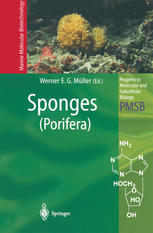

Most ebook files are in PDF format, so you can easily read them using various software such as Foxit Reader or directly on the Google Chrome browser.
Some ebook files are released by publishers in other formats such as .awz, .mobi, .epub, .fb2, etc. You may need to install specific software to read these formats on mobile/PC, such as Calibre.
Please read the tutorial at this link: https://ebookbell.com/faq
We offer FREE conversion to the popular formats you request; however, this may take some time. Therefore, right after payment, please email us, and we will try to provide the service as quickly as possible.
For some exceptional file formats or broken links (if any), please refrain from opening any disputes. Instead, email us first, and we will try to assist within a maximum of 6 hours.
EbookBell Team

5.0
70 reviewsSponges (phylum Porifera) are known to be very rich sources for bioactive compounds, mainly secondary metabolites. Main efforts are devoted to cell- and mariculture of sponges to assure a sustainable exploitation of bioactive compounds from biological starting material. These activities are flanked by improved technologies to cultivate bacteria and fungi which are associated with the sponges. It is the hope that by elucidating the strategies of interaction between microorganisms and their host (sponge), by modern cell and molecular biological methods, a more comprehensive cultivation of the symbiotic organisms will be possible. The next step in the transfer of knowledge to biotechnological applications is the isolation, characterization and structural determination of the bioactive compounds by sophisticated chemical approaches.